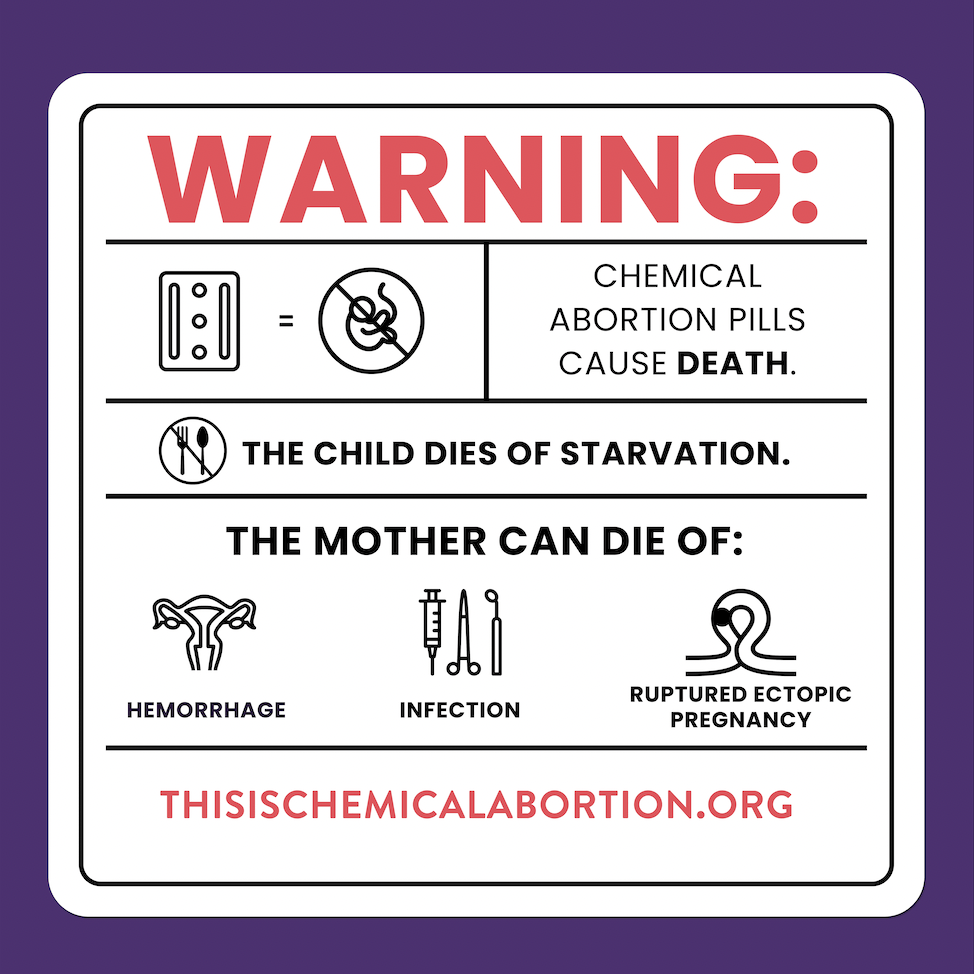
The abortion industry’s favorite new claim is that chemical abortion pills are safe and easy—but new research has recently come out, proving their claims are very wrong. According to a study by the Charlotte Lozier Institute, the use of chemical abortion pills significantly increases the risk of women going to the emergency room following an abortion, and that risk has grown by more than 500% since 2002! Here is a brief, user-friendly synopsis of the study:
What was the study called and who conducted it?
The study is called, “A Longitudinal Cohort Study of Emergency Room Utilization Following Mifepristone Chemical and Surgical Abortions, 1999-2015.” It was conducted by eight different Charlotte Lozier Institute scholars: James Studnicki, Donna J. Harrison, Tessa Longbons, Ingrid Skop, David C. Reardon, John W. Fisher, Maka Tsulukidze, and Christopher Craver.
What data did they use?
The scholars analyzed 16 years of Medicaid insurance claims which included 423,000 confirmed induced abortions and 121,283 resulting emergency rooms visits within thirty days of the abortion. The women in study were over 13 years old and resided in 17 different states.

Is this research peer-reviewed?
Yes, it was published in the international, peer-reviewed journal Health Services Research and Managerial Epidemiology.
What were the study’s key findings?
1. Chemical abortion significantly increased the risk of making an emergency room visit.
When compared with surgical abortions, chemical abortions have a higher chance of sending a woman to the emergency room for abortion-related reason by more than 50%. Women who had chemical abortions also had a 22% higher chance of going to the emergency room for any reason.
2. The rate of abortion-related ER visits is growing more rapidly for chemical abortions rather than surgical abortions.
As the researchers used the most recent data available, they found that chemical abortion-related emergency visits have been growing through the years. From 2002-2015, the rate of ER visits due to chemical abortions has grown by more than 500%.
Currently, the data shows that for every 100 women who choose abortion, 35 of those women visit the ER afterwards due to abortion-related concerns.
3. After a chemical abortion, later abortions are more dangerous.
After a woman has had a chemical abortion, any kind of abortion following within a year is twice as likely to send her to the emergency room.
4. Over 60% of the chemical abortion ER visits in 2015 were mistakenly or purposefully coded as miscarriage treatment.
The researchers found that it is physically impossible for a woman to have a confirmed chemical abortion, have another pregnancy, and then a miscarriage in one month. Therefore, when these ER visits from women who had confirmed chemical abortions within the same month were coded as “miscarriage treatment,” these codes were wrong.
Why is this information so important now?
Coming up on December 16th, the Food and Drug Administration (FDA) will decide whether abortionists must give women chemical abortion pills in person. This study sheds further light on how dangerous chemical abortion is for women and why it should not be given out with even less oversight.

The abortion lobby is fighting for women to have access to chemical abortion pills without any oversight: no clinical exams, ultrasounds, or follow-up appointments. They have termed this new avenue for abortions as “self-managed” abortions, and call it female empowerment—but what’s empowering about hurting women?
This study is yet another weapon in the pro-life generation’s armory against chemical abortion. Since it has been further proven that chemical abortions increase further risks of harm in women, how can the abortion industry support them? The answer here is that the abortion industry much prefers women’s money rather than women’s health.
To learn more about the danger of chemical abortion, click HERE.
Share this post
Recent Posts

National Celebrate Life Weekend Dominates D.C.: Just Look at the Coverage
01 Jul 2025
The Pro-Life Generation REACTS: “Big, Beautiful” Budget Bill Vote One Step Closer to Defunding Planned Parenthood & ALL Abortion Vendors
01 Jul 2025
News: FIVE Lawmakers Recognized for Defending Life
30 Jun 2025
